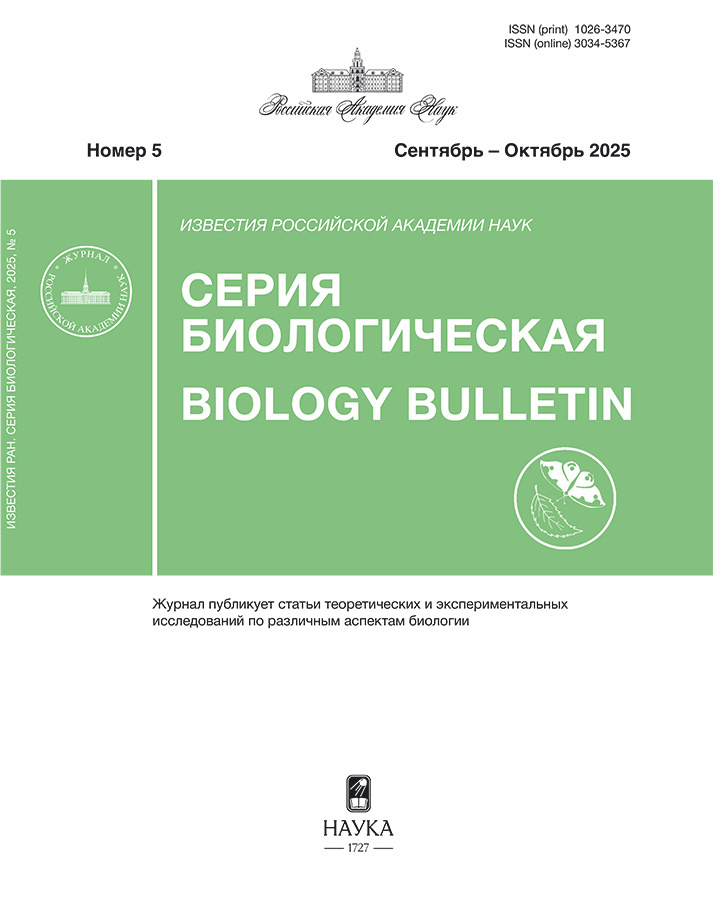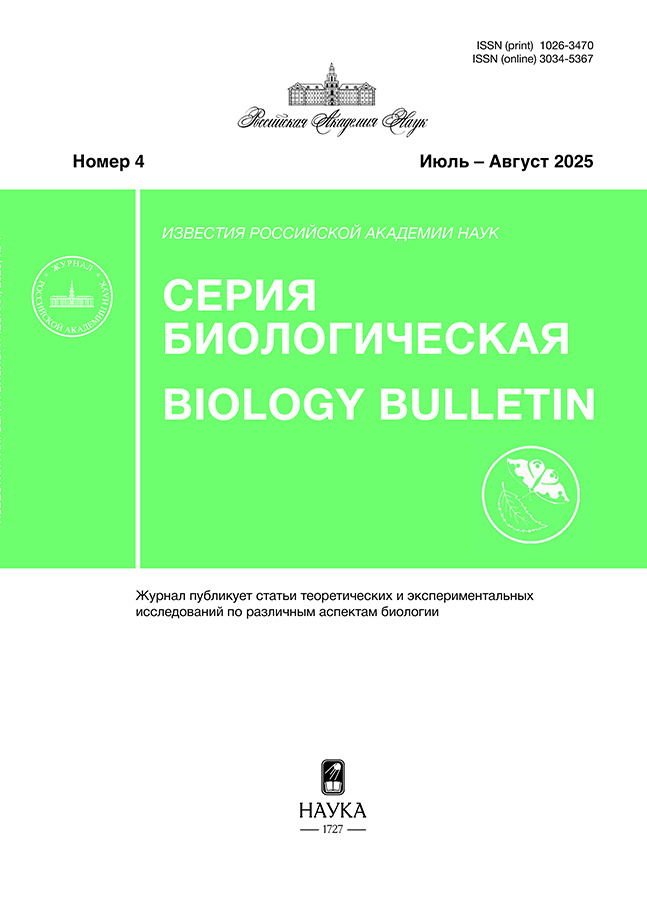Новый подход к оценке скорости равномерного движения микроорганизмов по спиральной траектории
- Авторы: Лях А.М.1, Рауэн Т.В.1
-
Учреждения:
- ФГБУН ФИЦ “Институт биологии южных морей им. А.О. Ковалевского РАН”
- Выпуск: № 4 (2025)
- Страницы: 489–494
- Раздел: КРАТКИЕ СООБЩЕНИЯ
- URL: https://innoscience.ru/1026-3470/article/view/687646
- DOI: https://doi.org/10.31857/S1026347025040128
- ID: 687646
Цитировать
Полный текст
Аннотация
Анализ движения микроскопических организмов важен для понимания их поведения, внутреннего состояния и реакции на внешние условия. Многие свободноплавающие микроорганизмы двигаются в трехмерном пространстве по спиральной траектории. При анализе трехмерной траектории по кадрам видео она превращается в плоскую кривую. Это приводит к потери части данных о движении и, в частности, к ошибкам в оценках пройденного пути и истинной скорости. Мы предлагаем оценивать длину трехмерного спирального пути по максимальной длине проекции отрезка траектории. Анализ показал, что для прямолинейных спиральных траекторий, по которым организмы двигаются равномерно, этот метод во многих случаях позволяет правильно оценить пройденный путь и истинную скорость движения и выполнить корректное сравнение скоростей разных микроорганизмов.
Ключевые слова
Полный текст
Об авторах
А. М. Лях
ФГБУН ФИЦ “Институт биологии южных морей им. А.О. Ковалевского РАН”
Автор, ответственный за переписку.
Email: me@antonlyakh.ru
Россия, пр-т Нахимова, 2, Севастополь, 299011
Т. В. Рауэн
ФГБУН ФИЦ “Институт биологии южных морей им. А.О. Ковалевского РАН”
Email: antonlyakh@gmail.com
Россия, пр-т Нахимова, 2, Севастополь, 299011
Список литературы
- Aragaki H., Ogoh K., Kondo Y., Aoki K. LIM Tracker: a software package for cell tracking and analysis with advanced interactivity // Sci. Rep. 2022. V. 12. 2702. https://doi.org/10.1038/s41598-022-06269-6
- Boakes D. E., Codling E. A., Thorn G. J., Steinke M. Analysis and modelling of swimming behaviour in Oxyrrhis marina // J. Plank. Res. 2011. V. 33. № 4. P. 641–649. https://doi.org/10.1093/plankt/fbq136
- Crenshaw H. C. A new look at locomotion in microorganisms: Rotating and translating // American Zoologist. 1996. V. 36. № 6. P. 608–618. https://doi.org/10.1093/icb/36.6.608
- Croze O. A., Martinez V. A., Jakuszeit T., Dell’Arciprete D., Poon W. C.K., Bees M. A. Helical and oscillatory microswimmer motility statistics from differential dynamic microscopy // New J. Phys. 2019. V. 21. 063012. https://doi.org/10.1088/1367-2630/ab241f
- Durante G., Roselli L., De Nunzio G., Piemomtese U., Marsella G., Basset A. Plankton Tracker: A novel integrated system to investigate the dynamic sinking behavior in phytoplankton // Ecological Informatic. 2020. V. 60. 101166. https://doi.org/10.1016/j.ecoinf.2020.101166
- Drescher K, Leptos K. C., Goldstein R. E. How to track protists in three dimensions // Rev. Sci. Instrum. 2009. V. 80. 014301. https://doi.org/10.1063/1.3053242
- Emami N., Sedaei Z., Ferdousi R. Computerized cell tracking: Current methods, tools and challenges // Visual Informatics. 2021. V. 5. № 1. P. 1–13. https://doi.org/10.1016/j.visinf.2020.11.003
- Ershov D., Phan M.-S., Pylvanainen J. W., Rigaud S. U., Le Blanc L., Charles-Orszag A., Conway J. R.W., Laine R. F., Roy N. H., Bonazzi D., Dumenil G., Jacquemet G., Tinevez J.-Y. TrackMate 7: integrating state-of-the-art segmentation algorithms into tracking pipelines // Nat. Methods. 2002. V. 19. P. 829–832. https://doi.org/10.1038/s41592-022-01507-1
- Fenchel T. How dinoflagellates swim // Protist. 2001. V. 152. № 4. P. 329–338. https://doi.org/10.1078/1434-4610-00071
- Gurarie E., Grunbawm D., Nishizaki M. T. Estimating 3D movements from 2D observations using a continuous model of helical swimming // Bull. Math. Biol. 2011. V. 73. P. 1358–1377. https://doi.org/10.1007/s11538-010-9575-7
- Rauen T. V., Mukhanov V. S., Baiandina I. S., Lyakh A. M. Influence of microplastics on the nutritional and locomotive activity of dinoflagellate Oxyrrhis marina under experimental conditions // Inland Water Biology. 2024. V. 17. № 2. P. 316–326. https://doi.org/10.1134/S1995082924020135
- Roberts E. C., Wootton E. C., Davidson K., Jeong H. J., Lowe C. D., Montagnes D. J.C. Feeding in the dinoflagellate Oxyrrhis marina: linking behaviour with mechanisms // J. Plankt. Res. 2011. V. 33. № 4. P. 603–614. https://doi.org/10.1093/PLANKT%2FFBQ118
- Vestergaard C. L., Pedersen J. N., Mortensen K. I., Flyvbjerg H. Estimation of motility parameters from trajectory data // Eur. Phys. J. Spec. Top. 2015. V. 224. P. 1151–1168. https://doi.org/10.1140/epjst/e2015-02452-5
- Yang Y., Qingxuan L, Yuezun L., Zhiqiang W., Junyu D. PhyTracker: an online tracker for phytoplankton // arXiv. 2024. arXiv:2407.00352.
Дополнительные файлы














